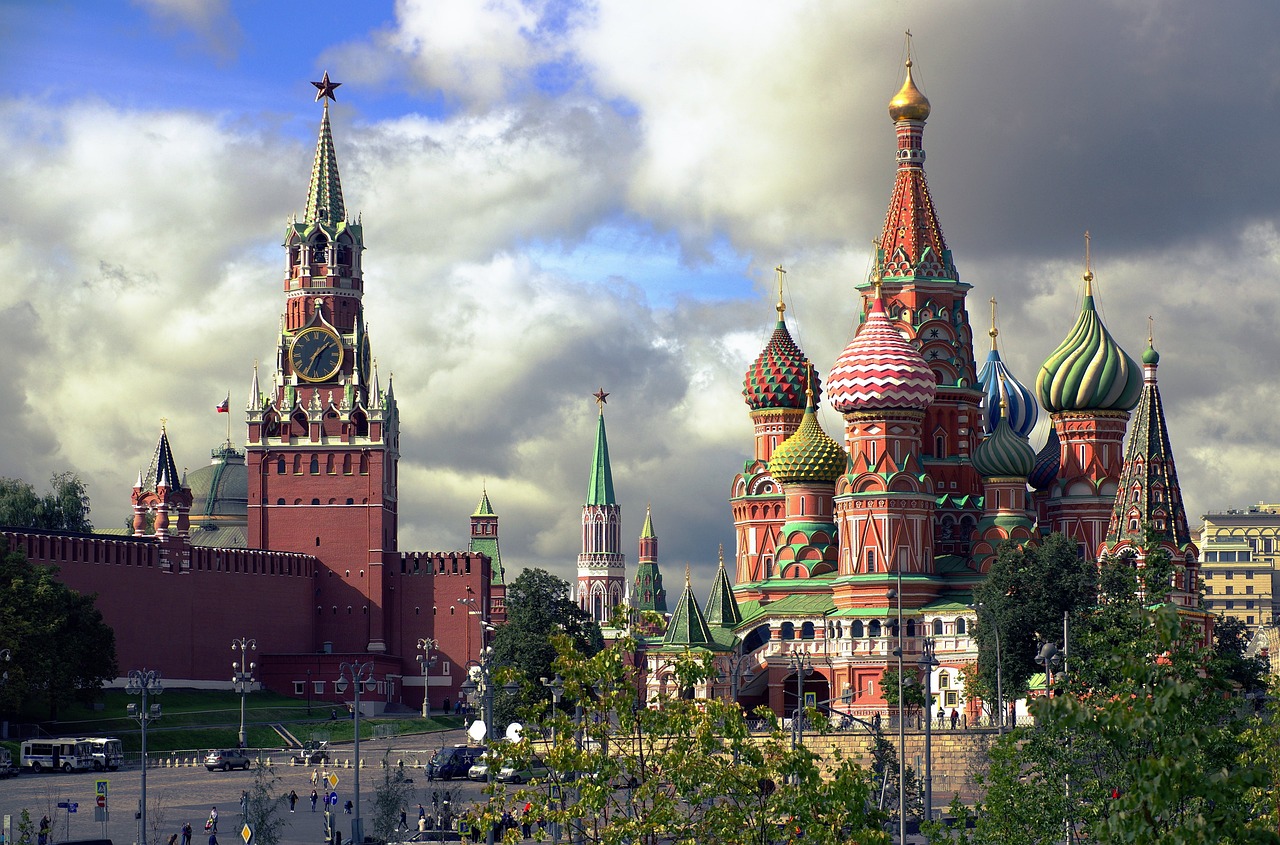By Pravak Mukkala
Saint Basil’s Cathedral, known as собо́р Васи́лия Блаже́нного (read as Sobor Vasiliya Blazhennogo) in Russian is a building located in Red Square in the Russian capital of Moscow. The building is a Russian Orthodox Church that was built by Ivan the Terrible, the first Tsar of Russia, who commissioned the church to honor the Siege of Kazan, the war that ended the Russo-Kazan Wars and marked the collapse of the Khanate of Kazan.
The church was built from 1555 to 1561. The building is 156 feet tall and was the tallest building in Moscow until the Ivan the Great Bell Tower was built 39 years later in 1600.

The church has nine onion domes which crown one chapel each. Onion domes are shaped vaguely like an onion. Such domes are usually taller than they are wide and end at a point. For example, the Taj Mahal has a large onion dome. Eight of the nine domes are arranged around the tallest dome in the center. The foundations of the church were built using white stone, a traditional building material of the time period, and the chapels of the church were built using red brick, which was a new material at the time.
Saint Basil’s Cathedral was consecrated (made holy; declared an official church) on July 12, 1561. While translated into English as a cathedral, the church isn’t actually a cathedral, as a cathedral is the primary church within a diocese (region/district), and is usually where the bishop (the in-charge of a diocese and a senior member of the clergy) is associated with. The Saint Basil’s Cathedral is an Eastern Orthodox sobor, which is similar to a Catholic basilica, which is somewhat like a major church.
Saint Basil’s Cathedral is a primary symbol of Russia.

